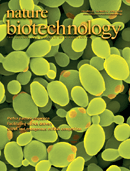At Nature Biotech, Science Communication Re-Considered

In this month’s issue of Nature Biotechnology, I join with other authors to suggest several bold new initiatives in science communication and journalism. The Commentary article includes an overview of key issues and trends in the field and closes with a series of specific recommendations.
The article is based on a workshop held this past year in Washington, DC, organized by Timothy Caulfield and Tania Bubela of the Health Law Institute at the University of Alberta. The authors reflect the participants in that workshop and include representatives from the U.S., Canada, the U.K., Germany and Australia.
I am in Denmark this week and so only have limited time to blog on the implications and themes of the article, but I will have more to say next week. For now, I have pasted below the fold the news release put out by American University which highlights the key recommendations made in the article.
Changes in Science and Media Demand Evolution in Science Communication
AU expert and colleagues outline eight steps to improve public engagement
Contact: Maggie Barrett, AU Media Relations, barrett@american.edu or 202-885-5951
WASHINGTON, D.C. (June 9, 2009)–Matthew C. Nisbet, an expert on the intersections between science, media, and politics, says that changes in scientific research and the rapidly changing media landscape demand that eight specific steps be taken by science organizations and journalists in order to better engage the general public and to accurately report scientific research.
“During the past several decades, science has become more bureaucratic, problem-based, and dependent on private funding. Public surveys point to a high trust in scientists, especially those affiliated with universities, but the trust level decreases when it comes to scientists affiliated with corporations or industries,” Nisbet said. “Factor in changes in the media landscape that have created audience fragmentation and ever fewer quality sources of science news, and it is clear that changes in science communication are needed to better engage the public on science-related issues.”
The eight steps are outlined in “Science Communication Reconsidered” an article published in the June 2009 issue of the journal Nature Biotechnology. The article presents the collective recommendations Nisbet and 23 other international experts in the areas of science, media, and policy presented at a science communication workshop held in Washington, DC. The workshop was organized by the Health Law Center at the University of Alberta.
The eight steps are as follows:
1. Scientists and science organizations should pursue a trust- and dialogue-based relationship with the public. More forums, conferences, and other public dialog initiatives should be held. The goal is not to persuade or to sell the public on the importance of science, but to “democratize” public input about scientific issues so that members of the public can meaningfully participate in science-related decision making.
2. Scientists and science organizations need to recognize the importance of framing science-related issues. Science communication efforts need to be based on careful audience research. In this regard, different frames of reference should be identified and tested that better communicate the nature and relevance of scientific issues across a diversity of audiences. This research on framing can be used to structure dialogue and to move public discourse beyond polarized arguments and entrenched positions.
3. Graduate students at science institutions should be taught the social and political contexts of science and how to communicate with the media and numerous publics. Graduate students are the future spokespeople and decision makers and need to understand the significance of research in the field of science communication. These programs should include specialized electives for doctoral students but also new interdisciplinary degree programs that combine scientific training with course work in communication, ethics, and policy.
4. Factors that facilitate media hype and errors should be recognized and addressed. Researchers should resist the temptation to describe their studies using hyperbolic metaphors and terminology, such as “ground breaking,” and remain true to the significance of a study. Research funding and methodological details need to be included in media coverage so that the public may better assess credibility. Short term gains in media publicity should not be valued over longer term relationship building with journalists, decision-makers, and the public.
5. Science communication initiatives should investigate new forms of digital media and film, moving beyond traditional popular science outlets such as the science beat at newspapers, science magazines, and TV programs such as PBS NOVA. This includes finding ways online to create opportunities for incidental exposure among key audiences not actively seeking news, information, and science-related content
6. Scientific organizations need to track science-related media coverage (whether news, entertainment, etc.) to be aware of the numerous cultural contexts through which the public interprets science. National newscasts, talk radio, blockbuster films, entertainment TV, and late night comedy provide broader audiences with alternative messages about science topics and can be important outlets for science communication.
7. Journalism schools and news organizations should develop a science policy beat to address the gap between journalists covering science and those covering politics. Developing such a beat and training journalists to understand both science and policy would provide important background for science policy debates.
8. New models of journalism–whether foundation, university, or government supported–are needed. The for-profit journalism business model is failing and specialty journalists, such as science journalists, are losing their jobs. In addition, new media formats offer another avenue for public participation, as user generated content can enhance professionally produced content.
Nisbet is one of the article’s two primary authors. He will also deliver the keynote address on science communication at the Danish Science Journalists’ Association’s Spring Conference 2009, held in Copenhagen, Denmark, June 11.
American University’s School of Communication is a laboratory for professional education, communication research, and innovative production in the fields of journalism, film and media arts, and public communication. The school works across media platforms and with a focus on public affairs and public service.
###




